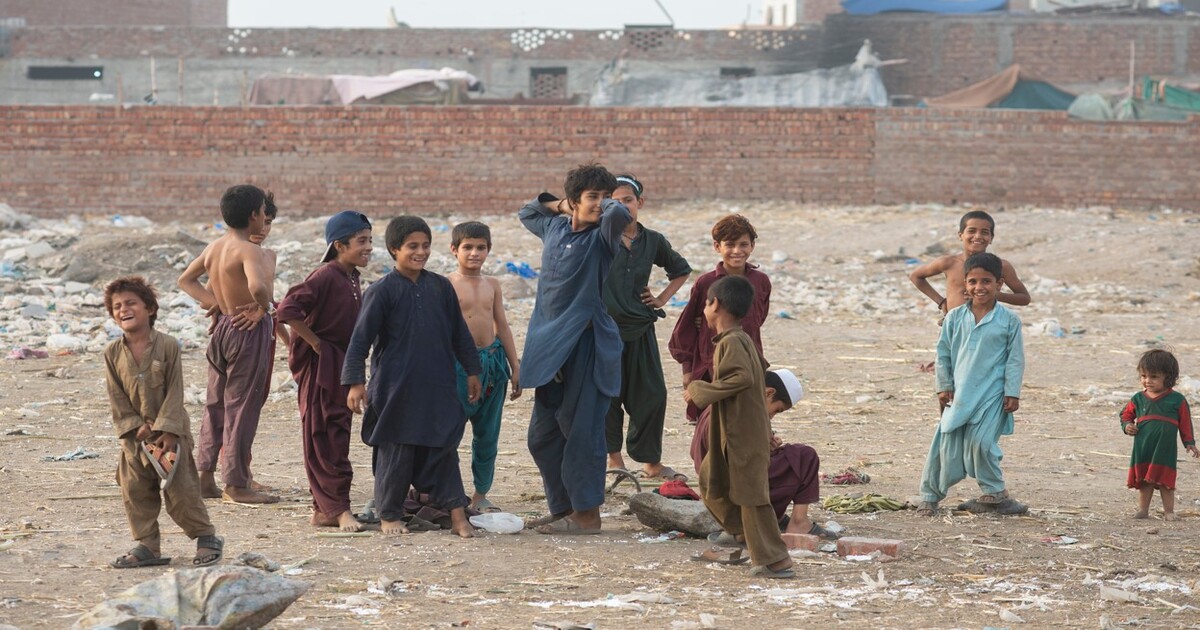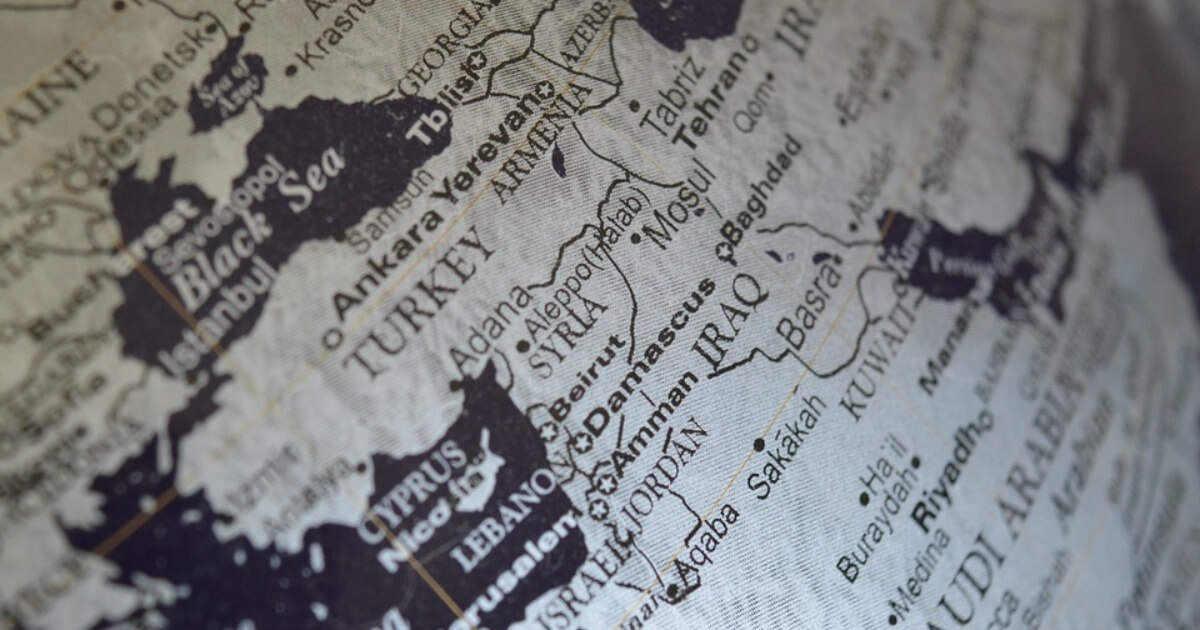Deportations From Pakistan: The Political Dimension
Are we dealing with yet another Afghan refugee crisis? Or an ongoing one?
November 25, 2023

A Strategic Intervention Paper (SIP) from the Global Ideas Center
You may quote from this text, provided you mention the name of the author and reference it as a new Strategic Intervention Paper (SIP) published by the Global Ideas Center in Berlin on The Globalist.
While much of the world is focused on the horrible events in Israel and Palestine, another chapter in Afghanistan’s long humanitarian ordeal has been unfolding in Pakistan.
On October 3, the government of Pakistan announced that all illegal foreigners (read: 1.7 million Afghans) must leave the country by November 1 or be arrested and forcibly deported.
Of the roughly 60,000 who had “voluntarily” left as of November 18, about 87% cited fear of arrest as their reason for going back. As of November 17, a reported 374,600 had left Pakistan for Afghanistan, mainly through Torkham or Spin Boldak in southern Kandahar province.
Goal: Putting pressure on the Taliban
To read the situation correctly, it is important to know that the crackdown by the Pakistani government, along with a number of trade and border-related measures, is clearly intended to put pressure on the Taliban.
The Pakistani government wants the Taliban to move against Afghanistan-based elements of the Tehrik-e Taliban Pakistan, which has pledged to overthrow Pakistan’s government.
Caretaker Prime Minister Anwaar-ul-Haq Kakar has linked the 60% increase in terrorist attacks to the August 2021 Taliban overthrow of the Afghan Republic. He has also blamed Afghan nationals for 14 of 24 recent suicide bombings.
That accusation, if true, is likely the work of former Taliban fighters. Lacking purpose in their lives after the 2021 victory in their home country, they have taken their call for jihad to Pakistan.
Sometimes haven
Despite the haven offered to Afghans over the last 40 years, their existence in Pakistan has always been tenuous. They have often been a scapegoat for the country’s social and economic ills, or used to leverage domestic political goals.
The Pakistani government has periodically attempted to push them out. The first push occurred after the withdrawal of Soviet forces in 1989, and then again post-2001, based on the logic that the new Western-backed government in Kabul was presumably capable of ensuring security.
An ambiguous refugee policy
While Pakistan stopped the registration of Afghan refugees in 2007, a supreme irony in all this is that the government of Pakistan, by providing safe haven and other forms of support to Taliban insurgents, was simultaneously trying to undermine that Afghan government in Kabul.
Pakistan carried out another supposedly “voluntary” repatriation in 2016, after relations between Afghanistan and Pakistan deteriorated.
All these previous attempts have been largely ineffective, with Afghans going into hiding, bribing local officials or returning to Pakistan after an interval in Afghanistan.
This time, Pakistan seems deadly serious
The Pakistan government appears to be more serious about the current process. It is establishing divisional and district-level offices, as well as “holding centers” to consolidate Afghans and then transport them to the border weekly.
At least one province has set up a toll-free number for citizens to inform on their neighbors, with rewards offered for information leading to arrests after the deadline.
Ominously, Caretaker Interior Minister Mir Sarfraz Bugti recently warned Pakistani citizens that “renting a house to illegal immigrants makes you a criminal accomplice.” Schools for Afghan children have been shut down, while hundreds of informal settlements built by poor Afghans in Islamabad have been demolished.
Caretaker Interior Minister Bugti also announced that Afghans crossing the border would be limited to Rupees 50,000 ($180) and no personal effects, and that “illegal properties” would be seized.
Many “Afghans” in fact born in Pakistan
Even though many of the affected Afghan households have lived in Pakistan for up to 40 years, they now had only 28 days to uproot and disassemble the life established over that period.
Many of these “Afghans” were in fact born in Pakistan to parents fleeing the 1979 Soviet invasion. For them, Afghanistan is in no sense “home.”
Worse, many of the more than 600,000 people who fled after the 2021 Taliban takeover out of fear for their lives will now be forced back into Taliban-controlled Afghanistan.
Traders and business owners are expressing concern that their investments and assets will be stranded, given the international restrictions on the Afghan banking system.
Corruption all around
Aside from the burden of the official process, the potential for abuse is enormous. The policy and the Pakistani public’s attitudes have provided a green light to the notoriously corrupt police and other officials to prey upon Afghans. The authorities do so, whether or not the Afghans’ papers are in order.
The limit on transporting currency and personal effects translates into an open season on Afghan assets and property. There are reports of a rise in police abuse against Afghans, including raids on houses at night and confiscation of personal property.
Even those with proof of refugee registration are subject to deportation. And even those who wish to return legally are subject to punitive corruption.
Pleas for help
International reaction has been consistent, even if seemingly largely ignored. The United Nations High Commissioner for Human Rights urged the Pakistan authorities to “suspend forcible returns of Afghan nationals before it is too late to avoid a human rights catastrophe.”
The organization cited the “grave risk of human rights violations if returned to Afghanistan, including arbitrary arrest and detention, torture, cruel and other inhuman treatment.”
And it added that “civil society activists, journalists, human rights defenders, former government officials and security force members, and of course women and girls as a whole” were especially at risk.
Others noted that Pakistan’s plan of mass deportation would be “one of the largest cases in history of refoulement,” i.e., the international law principle not to directly or indirectly force people to return to countries where they risk torture, persecution or other harm.”
Mass returns would overwhelm limited Taliban capacity
While the Taliban and aid agencies have set up several “reception” camps inside Afghanistan, they lack the capacity to support the return of over a million people.
This applies all the more so as the impending winter and ongoing series of deadly earthquakes in western Herat province since early October.
Regardless, the population influx now underway comes at a time when Afghanistan continues to suffer from a prolonged economic crisis and significant shortfalls in donor humanitarian resources.
The World Food Program (WFP) recently announced that due to a “massive funding shortfall” it will have to cut food assistance to two million people in Afghanistan. There is also the risk that with limited ability to absorb additional population into already overburdened cities, the camps will become permanent – as has been the case with past repatriation camps.
Instability in Afghanistan causes international chaos
As has been said over the years, what happens in Afghanistan does not stay in Afghanistan. Aside from moral and humanitarian imperatives, the entire West has a stake in reducing instability that could lead to additional refugees and informal migrants.
For the United States, mass deportations (including those who have been stranded waiting for anticipated immigrant visas) and additional Afghans fleeing the country would only underline the unhappy and chaotic end to the post-2001 involvement.
Europe lacks an ocean “moat”
For Europe, however, which lacks the moat provided by the Atlantic ocean, additional migrants would further strain already stressed social systems and feed right-wing movements that have made opposition to migration (and foreigners) a core political plank.
The EU has already been paying huge subsidies to its neighbors for “hosting” Afghans and other refugees to dissuade them from moving farther into Europe.
Public opinion limits Europe’s willingness to absorb additional migrants. Meanwhile, the optics of turning away or even deporting them (even those who are judged not to be in need of asylum) is not a good one.
This is especially true given some perceived Western responsibility for the risks that the returnees would face at home.
Mass deportation is counter-productive even for Pakistan
Moreover, mass deportation will likely be counter-productive even for Pakistan. It creates additional ill will among Afghans, and further raises tensions between the two countries.
It may also have second-order economic effects within Pakistan: The deportation campaign will disrupt existing economic relationships, transport and trade networks, as well as the market for low-cost labor.
Legal ambiguities
Afghans’ ability to contest their expulsion and its terms under international law are limited or non-existent. Pakistan is not a signatory to the 1954 UN “Convention Relating to the Status of Stateless Persons.”
More important, the political orders by the Pakistani government are issued in a political climate that is largely hostile to Afghans. In addition, Pakistani governance institutions are unable to distinguish between the legal status of different categories of Afghans in Pakistan (or uninterested in doing so).
Coincidentally, that is reflected in the imprecise terms being used interchangeably in local Pakistani media (e.g., “Afghans,” “migrants,” “refugees”). And on November 10, the Supreme Court rejected a petition against the government’s decision to forcibly deport Afghan refugees.
To dos
While the potential disaster has already been set in motion, some of the harm can possibly be mitigated.
1. Pakistan should immediately suspend its decision to deport unregistered refugees.
Pakistan’s November 10 announcement that it would extend through the end of the year the legal status of Afghans with valid proof of residence cards was welcome, but conflicted with the statements of provincial officials. And coerced returnees included those who had valid cards.
2. Pakistan and UNHCR should resume, accelerate and expedite their dysfunctional respective refugee registration processes.
There is no doubt that many of those who fled Afghanistan after August 2021 have as valid a claim to international protection as refugees who left in the early 1980s.
3. UN agencies and the international community should support Pakistan in its decision to suspend deportations.
At the same time, they should also end official and unofficial abuse of Afghans. This includes freeing those Afghans who are being detained solely for immigration status-related reasons.
4. Western nations should rapidly accelerate fulfilling their commitments to those Afghans who are most at risk.
This concerns, for example, former Afghan security and intelligence officials/Republic officials, women and human rights advocates, activists and journalists. Many of them are left in legal and administrative limbo in Pakistan due to the sluggish processing of immigrant visas for Afghans who await a decision on their asylum claims.
This includes applicants for the U.S. Special Immigrant Visa and the P1/P2 visa, the latter of which had required Afghans to move to a third country, with Pakistan being the only option for most.
5. Regardless of how many more Afghans will be crossing the border, Western nations should ramp up humanitarian support.
Even the volume of refugees who have already returned will be overwhelming.
6. In the longer term, the international community should also carefully consider the implications of “temporary” warehousing of refugees in neighboring countries during crises.
Afghans were welcomed to Pakistan more than 40 years ago —f or a combination of humanitarian and political reasons. However, the lack of resolution (e.g., citizenship, repatriation, etc.) has brought them to the ever more fragile situation in which they find themselves today.
Takeaways
While much of the world is focused on the horrible events in Israel and Palestine, another chapter in Afghanistan’s long humanitarian ordeal has been unfolding in Pakistan.
The crackdown by the Pakistani government, along with a number of trade and border-related measures, is clearly intended to put pressure on the Taliban.
The Pakistani government wants the Taliban to move against Afghanistan-based elements of the Tehrik-e Taliban Pakistan, which has pledged to overthrow Pakistan’s government.
Despite the haven offered to Afghans over the last 40 years, their existence in Pakistan has always been tenuous. They have often been a scapegoat for the country’s social and economic ills, or used to leverage domestic political goals.
While the Taliban and aid agencies have set up several “reception” camps inside Afghanistan, they lack the capacity to support the return of over a million people.
Mass deportation will likely be counter-productive even for Pakistan. It creates additional ill will among Afghans, and further raises tensions between the two countries.
A Strategic Intervention Paper (SIP) from the Global Ideas Center
You may quote from this text, provided you mention the name of the author and reference it as a new Strategic Intervention Paper (SIP) published by the Global Ideas Center in Berlin on The Globalist.


